8095 1806-1812 French Infantry
Dated: November 15, 2004.
Test shots, painted by Mr. Peter Styk of Slovakia
"Enclosed some pictures with many different uniform types of French and allies armies. First picture is group photo with painted test shots. I like this set much, because of many possibilities to build many types of French units." (Mr Styk's notes in quotes and Editor's comments in parenthesis.)
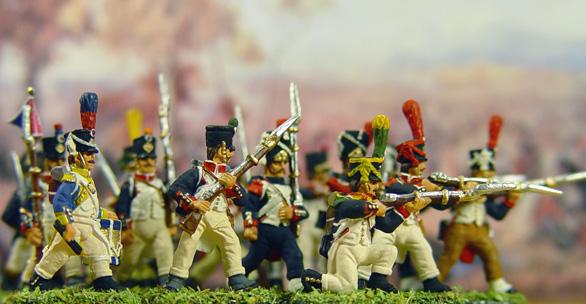
"Marching soldiers of 105th line infantry with officer and sergeant (with marking flag from my production)."
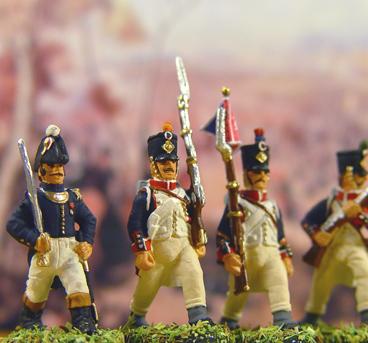

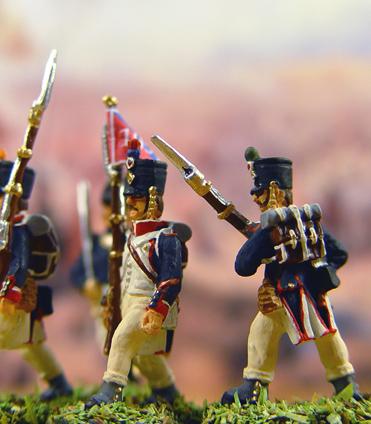
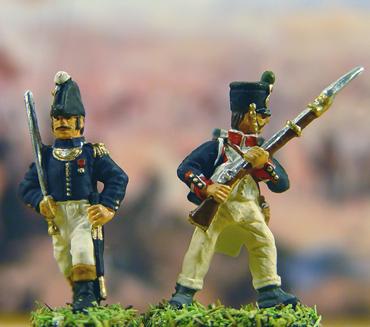
(Ed: Note rare pose of marching officer. NCO is carrying musket in right hand as per regulation and has NCO chevrons, sabre briquet (small sabre for elite troops) and crossbelts. He has a fanion, a company marker flag in his musket.
Fusiliers have pompoms and square shako plates on their shakos. They have the single cartridge box crossbelt over their chest. There are no devices on their cartridge boxes. NCO and infantrymen carry different styles of water bottles. Note the long tails of the tunics. At this time, the basic uniforms of the infantrymen are the same as the 1805 infantry, with the exception of the bicorne being replaced by the shako.
The different styles of water bottles sculpted on the figures include gourd, reed covered and two types of metal ones.

The infantryman and NCO's shako. Early shako plates had an eagle on the plate, later versions only had the regimental number. Note the extra tuft on top of the NCO pompom, the national cockade on the NCO is indented. Shako plates are intentionally left blank so that customer can customize their figures.)
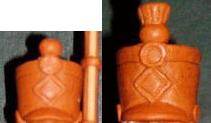
"Next four photos are soldiers of 18th in 1807 - with uniform. Soldier in red uniform is private of Valasian (Swiss) battalion from 1809."
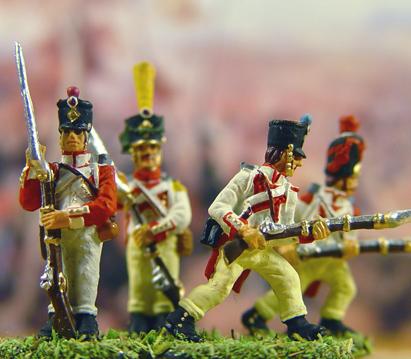
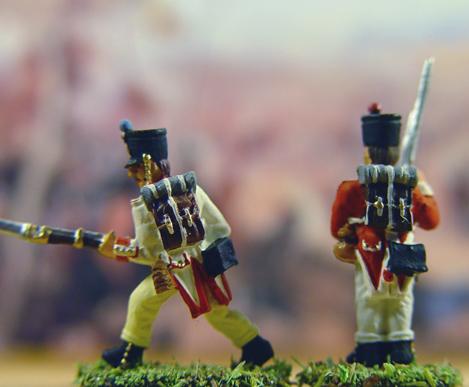
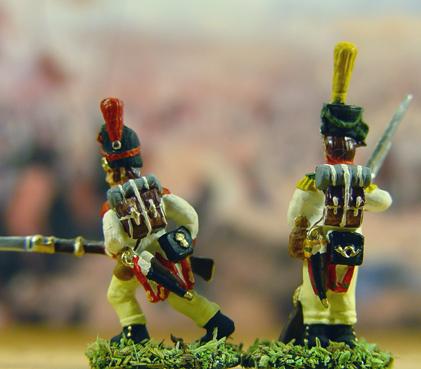
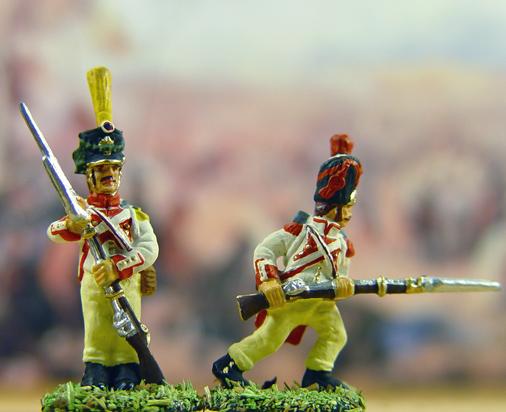
(Ed. Note in the bottom picture, the two elite infantry. Both have epaulettes, sabre briquets and double crossbelts, one holding the cartridge box and one hold the sabre briquet and bayonet holder.
It is not easy to see, but the voltigeur has an eagle, cords and a plume on his shako. There is a hunting horn device on his cartridge box.
The distinctions of the voltigeur: The plume, cords, bands and eagle on his shako, the sabre briquet and the hunting horn on his cartridge box.

The grenadier has plumes, cords and a grenade device on his shako plate on his bearskin. The bursting grenade device is also on his cartridge box. Grenadiers could also wear shakos instead of bearskins.
The distinctions of a grenadier: Plume, cords, bursting grenade device on his shako. Bursting grenade device on cartridge box. Sabre briquet. Mustache.
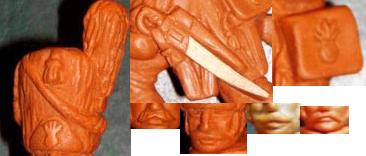
Here also see the aging of the face from a smooth faced youngster of the fusiliers to a man faced voltigeur to the grizzled face of the veteran grenadier. Evidence of hard living in the army of the Emperor.)
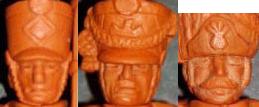
"On the next four pictures you can find soldiers of 44th line infantry regiment from 1809-1812. Drummer with his blue-yellow uniform is also member of this unit."
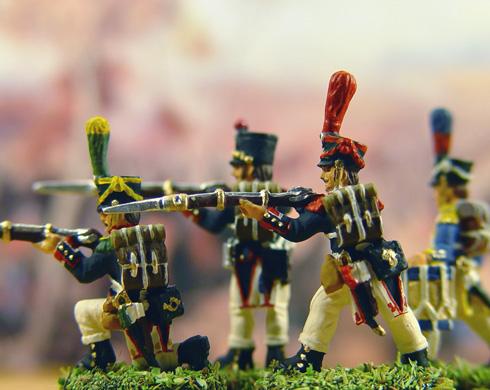


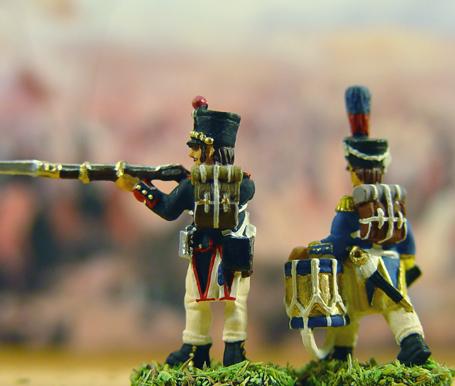
(Ed. Extra detail on the drummer: Extra detail on the collar, the drum stick holders on crossbelt. Special apron to protect thigh from drum chafing and scalloped cuff.)
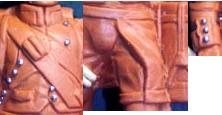
"Last five pictures are my personal favourite soldiers. Guard units. Grenadier a pied and Chasseur a pied of old Guard. Fusilier Grenadier of middle Guard (this one with shako) and the last one in red green uniform is a grenadier from 2nd reg. Guard of Paris in 1809 uniform."
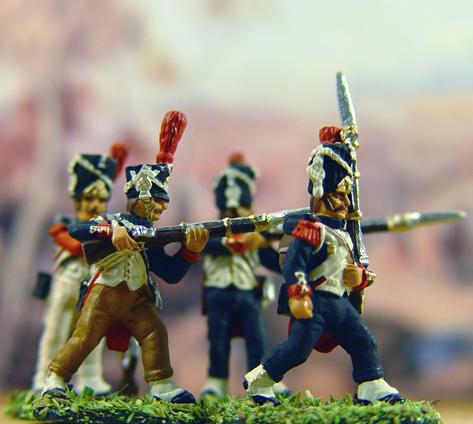
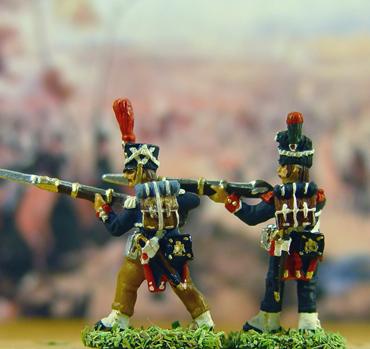
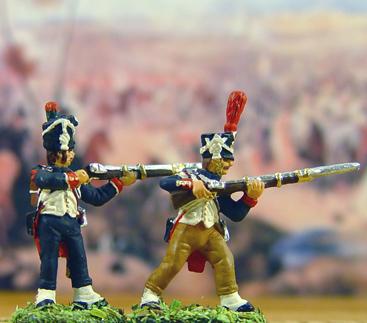
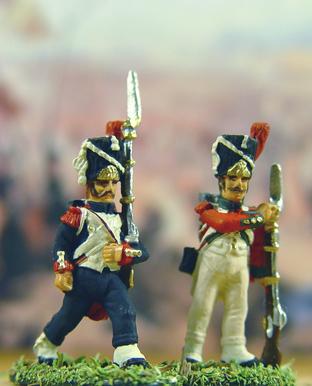
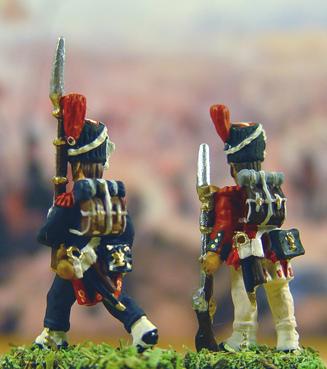
(Ed. Extra detail on the figures: Note the gaiter strap sculpted under footwear, sword knot on the sabre and rolled undress cap and tassel under the cartridge box.)

Many thanks to Mr. Peter Styk (Slovakia).